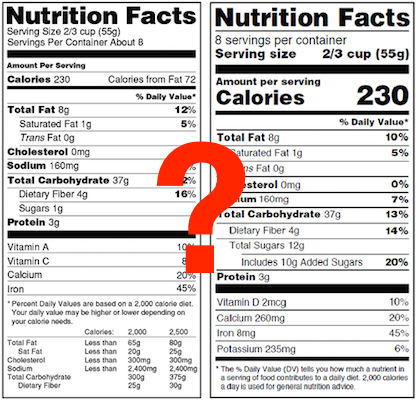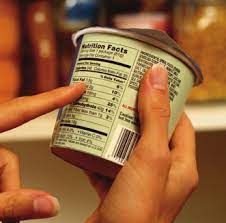Your Packaging and Marketing
[This is Part 3 in our series on packaging. You can find Part 1 on things to think about when packaging your food product and Part 2 on choosing your packaging. This part focuses on the design elements of your packaging - beyond the packaging itself.]
You want your food to look as good as it tastes, and what you put it in helps showcase it. The design of your packaging is a big part of effective marketing and your product's success.
What Does Design Do For You?
Your packaging builds your brand and sells your product. People have to see, understand, and want to try your food before they decide to buy it. Good design gets you there by:
- Getting your product noticed on a crowded shelf.
- Making your product recognizable enough for people to easily find it again.
- Building your customers' trust and confidence by showing that your business and product are professional.
- Conveying the quality and safety of your product.
Where Do You Start?
Before you make decisions about your design, ask a few questions about your product and your market:
- What are the key features of your product?
- What makes it different or special?
- What's its story?
- Who are your competitors?
- Who are your customers and what do they like, want, and need?
- How does your product address their needs?
- What is your product's value to your customers, and how will you help them understand that?
And don't forget that stores are customers too. Your packaging should also take into consideration their layouts, space constraints, and stocking and stacking needs.
What Goes Into The Design?
Package design covers both the container and the labels or printing you put on it. Lots of elements come together to create effective design.
Color
Color is the first thing people notice. Different colors have different effects on us and mean different things in one part of the world than in another. You can use color to stimulate the appetite and even help people imagine the flavor of the food. Jenn David, a food packaging design firm, has a good article on the use of color in food packaging with more details.
Shape
Shapes are instantly recognizable, and the shape you choose for your overall package can make your product stand out. Of course the shape also needs to be a good functional fit for what you make, and really unusual package shapes can cause problems for a store by being hard to stock or stack.
So you can also play with shapes on standard packaging by using cutouts. Package windows can be eyes, mouths, stomachs, whatever shape suits your story and brand and fits with your other images.
Imagery
Images can tell your customers about the food itself (its flavor or texture), about a quality it has (old-fashioned, fresh), or about a feature that sets it apart (Morton salt: it pours even in the rain). Images can also create moods or associations with your product, including showing customers what they can do with or because of it (eating a Clif Bar will help you do what you do, especially if it's free rock climbing).
The style of the image is part of the impression it makes; photos and line drawings say and convey very different things even when their subject matter is nearly identical.
And an image doesn't have to be confined to a graphic. It can be the whole package, like these great honey jars from InSites Consulting.
Copy
Words become part of your design when you use them to draw attention, make claims, and tell parts of your product's story. Sometimes just a few will do, and sometimes you want the effect of a block of print. Some words, though, (like "new and improved") take up space without doing you any good.
Typography
The fonts you choose will support the rest of your story. They can look modern, casual, or formal. Some are easier to read than others. Typography, though, goes beyond the general font style to include curves, loops, or points within a word or phrase, all of which can guide the eye and create different reactions and emphases without any further formatting. This wonderful periodic table of typography illustrates the wide variety and styles available.
Placement
Where you put your images, words, and colors controls their impact. How you place your elements in relation to each other (the composition) affects their individual importance and meaning and also determines the overall clarity of your message.
Materials
Your packaging materials dictate many of the design options you have (like dye choices, color saturation, shape, etc.), but they can also be design choices themselves. A carton of soup, for example, says something different than a can of soup. And exactly the same label design placed on exactly the same glass container can create different impressions depending on the label's material and finish.
How Do You Put It All Together?
If you're just starting out and on a tight budget, you can find stock materials and lots of design ideas and resources online. For inspiration, Packaging of the World and The Dieline have plenty of images and information. You can also look here, here, or here for more ideas and advice. You can find instructional resources too. And if you don't have a design program, you might want to look at Canva.
If you need help with design, you can crowdsource it. (Here are some of 99designs' thoughts on package design.) Sites like Thumbtack connect you to professionals in different fields, including design. And of course you can find local contacts and resources by talking to other food makers, food labs, or small business associations in your area.
If you want the specialists, there are packaging designers who work specifically with food companies. You probably need a significant budget for the services, but many of the designers have helpful information on their sites. While we don't know have experience with them personally, you can look at Jenn David, Miller, Gerardot and Co, Catalpha, or, in Australia, Swear Words.
A Last Word
Finally, don't forget about the required parts of your package labeling! ReciPal's nutrition labeling tool makes that part easy so you have more time to figure out the overall design that will get your product noticed and build your brand and your business.






